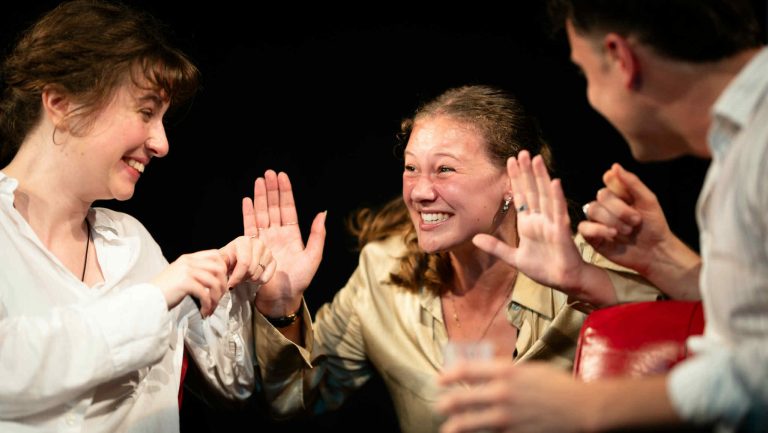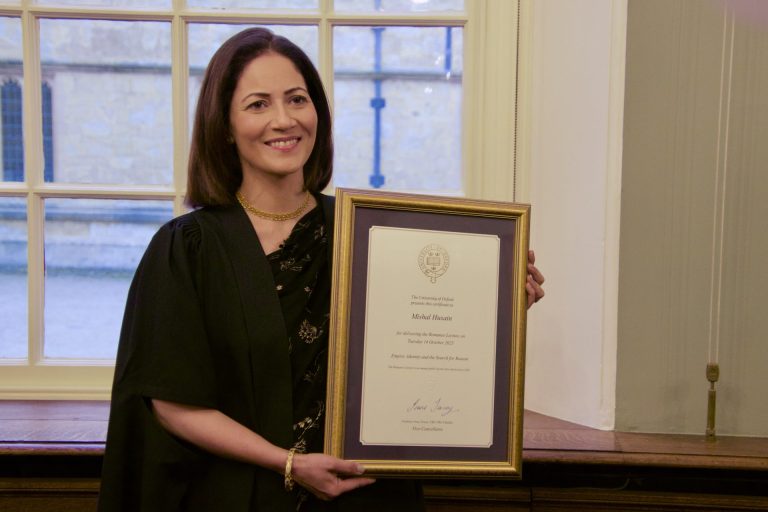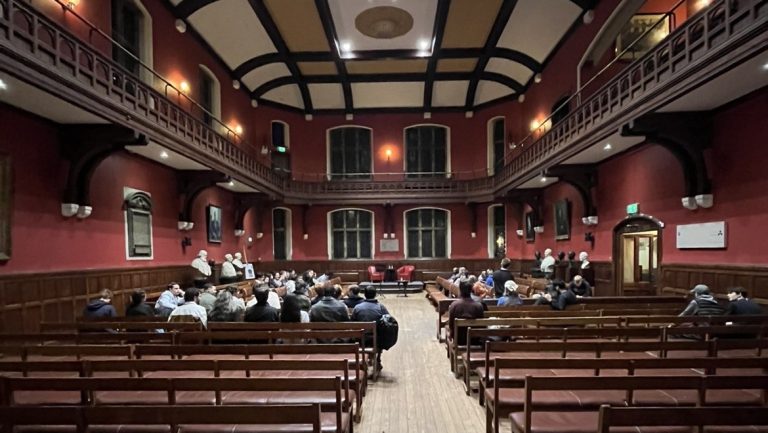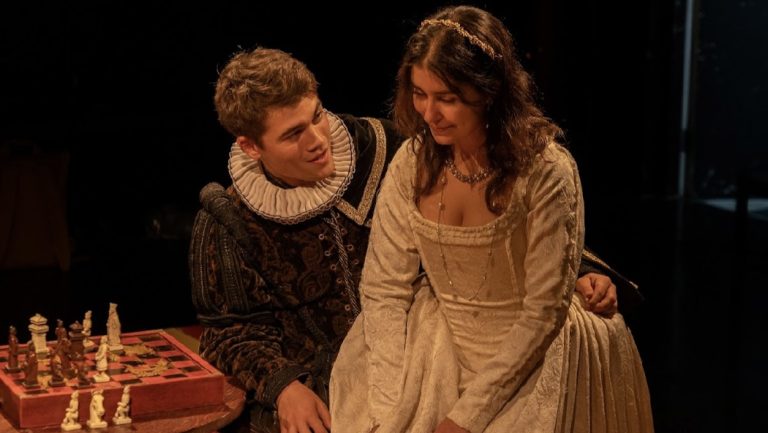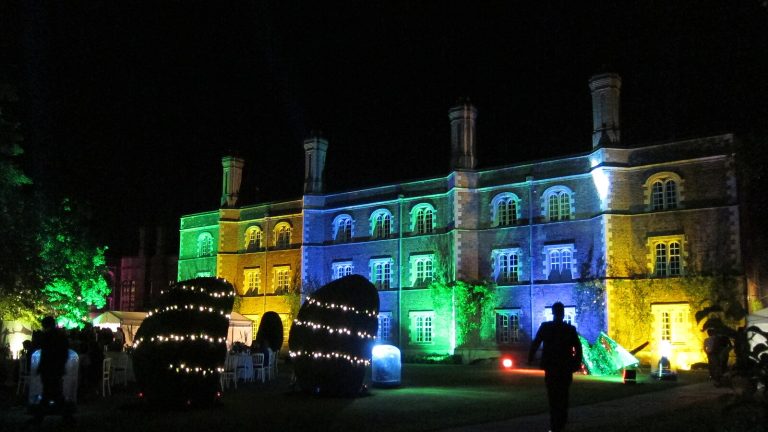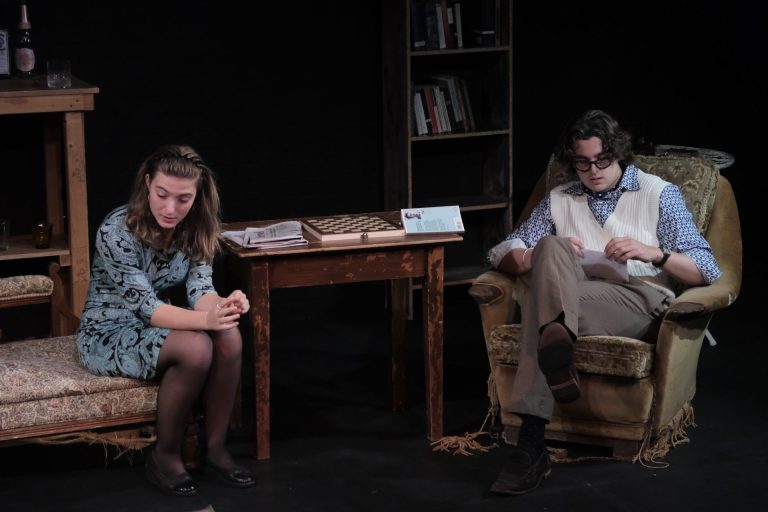Students have started reaching out to Oxfess to solve the annual dilemma: which colleges are hosting balls, and which are the best to go to?
Within weeks of unpacking in Michaelmas, inboxes fill with calls for committee applications, while tickets for launch parties are more sought-after than a last-minute Park End code. But there is more to a ball than the glamorous logo on the Instagram account – they put the college’s relationship with their students under a microscope. From proposal to realisation, the inner workings of a ball define the student experience beyond that one night, with college patriotism following you from the first stash drop to your visits after graduation. It’s no surprise that students want to know how to make the most out of their Trinity, but that decision may very well not be yours, as the future for Oxford balls looks to change.
A ball, let alone a worthwhile one, is no guarantee. I myself know how unstable ball planning can be: last year I was on the committee for a ball that never happened. Complications with a bursar handover meant that the 2025 Keble Ball proposal was rejected twice, even after St Catherine’s College bursar volunteered to take all liability for a joint ball.
The anticipation around a college ball is part of its magic – it is the event of the year, and a brilliant way to celebrate the college community. But this anticipation creates huge pressure, particularly for the ball committee. Thrown in at the deep end, with budget proposals and production companies to book alongside very busy degrees, how do these committees actually make it to the first drink?
The secret: it’s all about the bursar.
Before we begin
What’s in a ball? According to the Student Union’s guide, an Oxford ball is a must-do bucket-list activity. Most colleges host one every one to three years, inviting current students, alumni, and often guests. The evening is organised by students who first plan a theme, then embellish with food vendors, drinks, musical entertainment, and other activities. Anticipation for a ball builds from Michaelmas to Trinity – the event is announced, tickets are sold, and then black-tie wear is bought. College balls are a great way to celebrate your college community, combining both MCR and JCR, and for the college to foster connections with past students. For students, it’s a fab night out, and you can even work for some of it to get subsidised tickets. This is the legacy of the Oxford ball tradition, but there is more to a ball than an Instagram post.
A ball must be chosen wisely. It’s not just about who the headlining act is or how watered down those cocktails are. Oxford balls are a unique phenomenon, in that they are entirely held up by goodwill between the members of a college and its Governing Body, meaning that wealth, reputation, and other behavioural issues in college are also factors influencing decisions made. Getting from the first committee meeting to the survivor’s breakfast is a complicated, stressful process – I’ve broken it down into a few not-so-easy steps.
Step one: Manage your (college’s) budget
The average budget of a college ball, calculated from various FOIs, is £250,000. Despite this cost, it is rare that any college is financially affected by them. They are mainly non-profit, self-funding business operations run entirely on ticket sales. Yet the wealth of a college still hugely impacts the budget, scale, and success of a ball, so that rich colleges know best how to look after their students.
Wealthier colleges tend to have the best relationships with their alumni. The more benefits a college can give to alumni, the more likely they are to receive donations. The success of a ball is therefore not just a promise for alumni, but a commitment to current students for what they can expect when they graduate. A spokesperson for New College told Cherwell that the purpose of a ball is “conviviality” and to hold a “memorable event”, while St John’s College bursar described it as a “unique and shared experience to celebrate students’ time in Oxford”.
There is a more practical significance to accommodating undergraduate, postgraduate, and past students in a single event – the relationship between each class of ticket is integral to the success of the ball. Tickets for current students, particularly access tickets, are subsidised by a premium on alumni sales. As a result, richer colleges can offer more to their alumni, take in more in donations, and have better-subsidised tickets for current students, creating a virtuous cycle for when those students graduate.
Furthermore, while a college’s wealth has no direct impact on the funding of the ball, it may impact how invested the college is in ensuring its success. If appeasing students of past and future is a large part of your endowments and funding, you care a lot more about guaranteeing a good night.
Step two: Choose your bursar
Once you have your ball (provisionally) approved, you must get to the planning. But the budget of the ball is not the only factor monitoring its scale: the involvement of the bursar is paramount. The balls with the strongest rapports with their bursars, according to testimonies from students and bursars individually, are Merton Winter Ball and St John’s Trinity Ball. Coincidentally, these are the balls with the highest budgets of those who responded to Cherwell’s survey. In previous years, the bursars from St Hilda’s College and Mansfield College took little involvement in the production of the ball beyond their legal requirements.
In my many emails to colleges across the city, it was notable that the wealth of the college correlated with the amount of characters utilised in their response. Call it networking or saving face, wealthier colleges were much more open about the entire process of organising a ball.
Iris Burke, Bursary Manager for St John’s, explained that professional staff have taken on more responsibilities for the ball. This was to help “from a risk management perspective and to ensure valuable learnings and experience get passed on to the next cohort of students”. Their domestic bursar and another Governing Body Fellow are on the organising committee for the college ball, liaising closely with the student volunteers.
Since the COVID-19 restrictions on events in 2020 resulted in many cancellations, the role of college staff in upholding the institutional memory of college balls has been increased. Usually, the handovers between ball presidents, along with students’ own experiences of previous balls, preserve a college’s own traditions. However, with the cancellation of balls from 2020 onwards, and the difficulties in getting them started again, there’s a break in the chain on the student sides. Previous ball presidents may have graduated or dropped out, and few students left in college remember the pre-2020 balls. The expertise of college staff, therefore, has become increasingly important.
After the 2019 and 2023 cancelled Keble Balls, Jade Morris came to the role of Ball President with a Governing Body who had never experienced a ball at Keble. She explained to me how she contacted the previous Ball Treasurer through Facebook after seeing their name on the handover documents. “A lot of it was on the fly,” but she managed to orchestrate the cheapest college ball in Keble memory: current student tickets were only £80.
The Keble alum recalled how it was her chosen production company that had to explain to her that the £75k budget approved by the Governing Body was not going to be enough. “As soon as you get a marquee involved, there are a lot of extra health and safety costs.” A domestic bursar, therefore, is essential: “the paperwork is unavoidable”. “I was on the phone to the Senior Fellow and Domestic Bursar from 5pm most nights for weeks leading up to the ball.”
It was stressful, but she enjoyed the experience of “building a ball with a blank slate.”
A good bursar with a good heart builds a good ball. Harmohinder Bahl, the current Home Bursar for Worcester College, has made his role integral to the Oxford three-year memory cycle. While his main focus is “to make sure the event runs smoothly and responsibly, with minimal financial and reputational risk to college” he also sees it “as a chance to help students grow. Organising a ball develops valuable skills — teamwork, budgeting, leadership — and it’s rewarding to see students gain confidence and enjoy what they’ve achieved.”
Over lunch or coffee in the college hall, he initiates meetings between the previous and upcoming ball committee members to help provide advice and bounce ideas off of them. Beyond his personal involvement, he has established a tradition of providing a “lessons learned” document to the committee one month after the ball, once the euphoria has waned, to compile advice for future iterations. He explained that it’s all about balance: “I don’t want this to thwart the creativity and evolving nature of balls to come”
When we spoke, he emphasised that there is no tension or hierarchy in the bursar’s involvement with the ball: he sees it as him explaining the experience and sharing his expertise. “I would deliver the ball, but it would be commercial, not for the students.” It is paramount to him that the ball is a collaboration; this is a level of trust that was demonstrated in 2021 when he took on the responsibilities of the outgoing bursar’s ball committee. I asked why he felt comfortable doing so – other balls have been cancelled due to changes in bursar, as I experienced with last year’s aborted Keble Ball. Bahl simply said that he “ had complete confidence in the ball committee’s ability and enthusiasm. They were organised, motivated, and willing to learn — and with that level of commitment, plus my own experience, I felt everything was in good hands”.
This level of college involvement in the planning of a ball has changed since the cancellation of the 2020-2021 balls: Mansfield College now position their bursar onsite throughout the ball to respond to any issues arising that evening. This role, however, is still entirely focused on the legal requirements and implications, whereas Bahl’s personal trust and confidence is well placed. When I contacted him for a comment request, he asked to call instead so that I could ask as many questions as I liked. A bursar ought to have confidence and involvement in the student committee.
Step three: Get to know the JCR
Across all colleges, one thing is unchanging: the ball is a student-run operation. The bursar represents the college and Governing Body, but it is the ‘Ball Committee’ who must first approach the Governing Body with a proposal. Each college’s Governing Body comprises of Fellows, many of whom hold University posts. Colleges are hesitant to guarantee a ball outright, but many make reference to a “standing order” in their JCR handbooks which guides the JCR in creating an application to present to the college. This subsection of a handbook is the closest thing that colleges offer in lieu of an instruction manual: they include the standard procedures of how often the college hosts a ball, what a proposal should include, and what a committee should look like.
So, if you want in on the ball, it seems that you best befriend the JCR committee. In some rather lacklustre responses to my emails, most college bursars declared that they have no involvement with the ball selection process and that it is entirely organised by the JCR. St Hilda’s College Ball is “wholly dependent” on the JCR petition and election of a committee, and the Balliol College JCR leads the selection process. Worcester College were the only ones who mentioned an interview process with the Governing Body for roles such as president and treasurer, while only Merton College specified the involvement of the MCR in the proposal for a ball.
Regardless as to how much support the college offers to their ball committee after the confirmation of the ball, the proposal and instigation is a student initiative. Each college can adjust their level of involvement at any point in its development, but Bahl’s “complete confidence in the ball committee’s ability and enthusiasm” was echoed by other bursars such as David Palfreyman at New College, who told Cherwell that in his 40 years as bursar he has experienced “no disasters organisationally or financially – students can organise very effectively!”. Of the 15 colleges who responded, none other than Keble have a record of a rejected ball proposal.
Step four: Pick your poison, or rather, production
Balls are a competitive business. Restrictions on events during exam season means that there are limited dates that colleges can host. While most colleges sell out their own students’ tickets, the inflation on guest tickets is how many break even. There is obviously a market for guest tickets: balls occur in three-year cycles so students often attend other college balls in the years between their own. When tickets are at such a premium, it isn’t just a struggle to make your ball more appealing, it’s difficult to book production companies.
The staple entertainment events for Oxford balls range from musical headliners to bumper cars and swings, while certain refreshment stalls offer sponsorship. When multiple ball committees are targeting the same providers, it is a race to sign contracts before they get double-booked for the same day.
The extent to which balls are conceptualised and developed by students worsens this issue. Once you sign up to a ball committee, you realise that it is an echo chamber of all other balls ever held: whether you are drowning in handover documents, comparing notes with other colleges, or looking at previous celebrations, the names of the same production companies and caterers begin to feel like a threat.
Still, this is not an issue separate to the college’s involvement: budgets are built from the supplier’s quotes, but they may be booked out by the time the Governing Body approves the proposal.
These costs are not insignificant either: both catering and production occupy a third each of the average ball budget. Once themes are announced, Oxfess will resurface to ask the masses who the predicted headliner for each college is. Despite being the centre of many students’ concerns on which ball to attend, entertainment (both musical and non-musical) never takes up more than a quarter of the budget.
Top tip: Get them before they are gone
The future of college balls is changing. Last year, Cherwell investigated the ways in which colleges invest their endowment wealth into student life. Of course, subsidising accommodation and offering study grants are more essential to student life than a college ball is, but the investigation revealed that the relationship between college spending and student welfare changed after the 2020 lockdown. Cherwell found that “colleges have increasingly adopted protective financial policies that place the possible needs of future students above the real needs of current students”. A college ball is still an investment in students because it fosters good relationships with their alumni, who will likely fund future balls through ticket sales or donate directly to the college. It is therefore no surprise that the wealthier colleges have more regular balls with larger budgets: the involvement of a bursar indicates whether or not the college is invested or detached from student life.
It will be notable in future years to see which colleges adapt to the changing needs and expectations of students regarding the provision of an Oxford ball. Since 2020, balls have changed structure in multiple ways. Many colleges now have increased the role of the bursar to ensure financial stability, but the cost of living has affected budgets too. The production costs for Exeter Ball, including the transport of equipment and energy costs for the evening, for Exeter Ball jumped from 27% of their 2019 budget to 38% of their 2022 ball.
But some of these changes don’t just reflect the state of the nation but a changing perspective on these celebrations. Worcester College first implemented noise regulations in 2023 after a series of complaints, spending around £4,000 on combating that alone. Bahl explained that this was simply a courtesy: they believe in “One Worcester”, a “shared sense of unity between everyone connected to the College — students, staff, alumni, and the wider community. It means working towards common goals and making sure that big events like the ball bring people together rather than apart.” The individualism of each ball created by the strong sense of college identity required to advertise it does not separate it from its local area.
As the budget for a ball is increasingly unsteady due to cost of living and efforts to ensure the sustainability of a ball, the overall provision of a ball may itself be changing. Bahl explained that the current structure of a ball is becoming an unsustainable endeavour because “the way balls are promoted and delivered is evolving, especially as costs rise.” When I asked him what he saw in the future for Oxford balls, he said “This might mean smaller events or less frequent ones, but it also pushes us to think creatively about how to make them special. With the right mindset, and where finances allow, colleges can still create memorable experiences — and well-funded colleges will likely continue (or start) to offer strong support to keep that tradition alive.” He has been working with the SU to explore the possibilities of a more collaborative approach between colleges. With the rise of Town Hall black tie events and ball alternatives like the Catz Gala last Trinity, the demand for a ball is changing.
Jade Morris disagrees. “The secret is in simplicity – the Keble ball was lovely because it felt like a Keble event for Keble people.” She explained that it was no coincidence that the queue for drinks was always longer than the queue for food – this type of numbers game is what keeps a ball safe. “The purpose of a college ball is to show that you care about your students. Logistically speaking, it’s a pain in the ass”. A smaller ball is more intimate, but it also keeps guests’s expectations in check: Jade explained that the recent Keble Ball was limited to alumni from the last five years only because they would want a “Keble event” rather than “dinner with a champagne reception”. It clearly worked: tickets sold out within three seconds.


